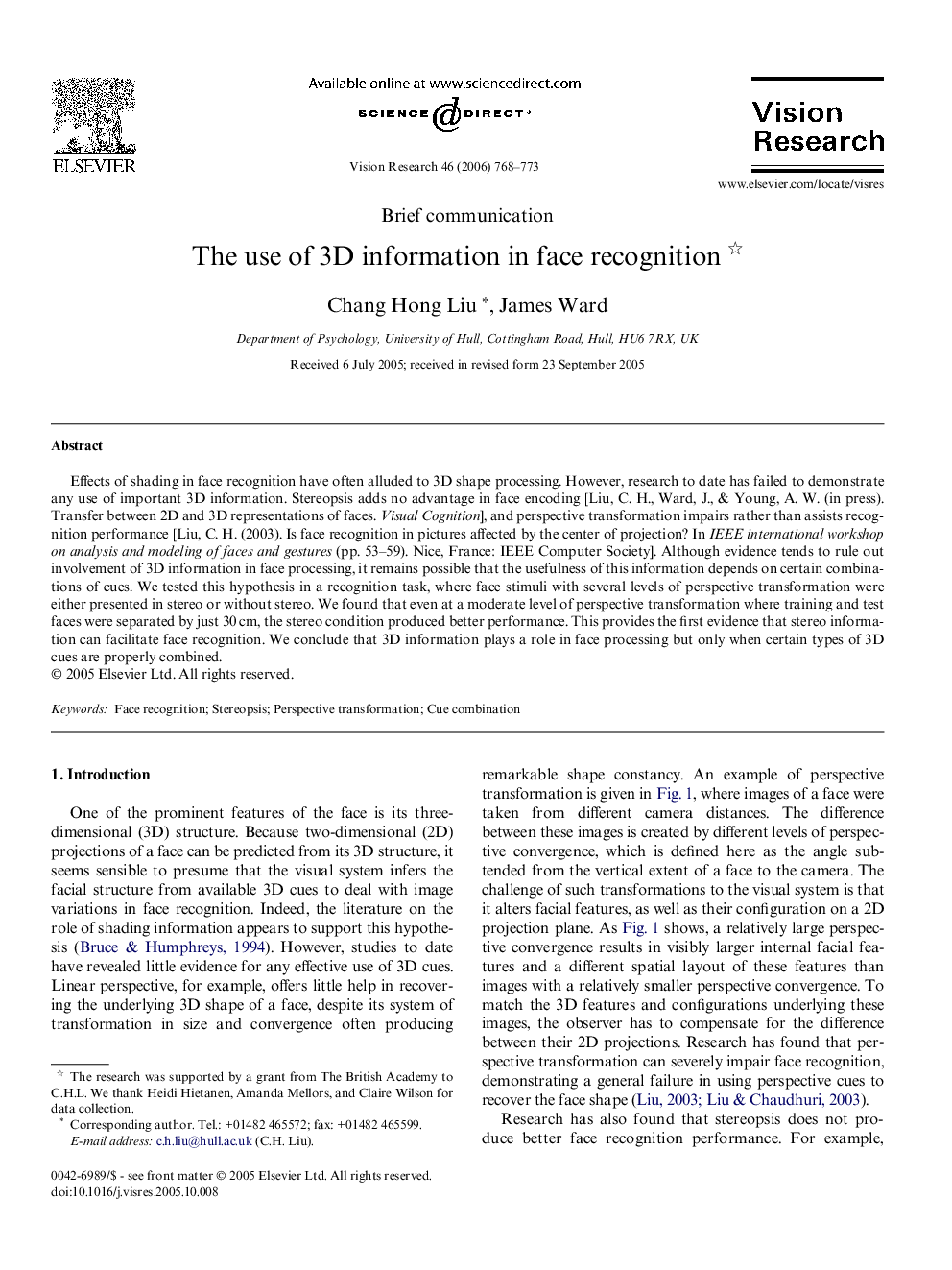| Article ID | Journal | Published Year | Pages | File Type |
|---|---|---|---|---|
| 4036335 | Vision Research | 2006 | 6 Pages |
Effects of shading in face recognition have often alluded to 3D shape processing. However, research to date has failed to demonstrate any use of important 3D information. Stereopsis adds no advantage in face encoding [Liu, C. H., Ward, J., & Young, A. W. (in press). Transfer between 2D and 3D representations of faces. Visual Cognition], and perspective transformation impairs rather than assists recognition performance [Liu, C. H. (2003). Is face recognition in pictures affected by the center of projection? In IEEE international workshop on analysis and modeling of faces and gestures (pp. 53–59). Nice, France: IEEE Computer Society]. Although evidence tends to rule out involvement of 3D information in face processing, it remains possible that the usefulness of this information depends on certain combinations of cues. We tested this hypothesis in a recognition task, where face stimuli with several levels of perspective transformation were either presented in stereo or without stereo. We found that even at a moderate level of perspective transformation where training and test faces were separated by just 30 cm, the stereo condition produced better performance. This provides the first evidence that stereo information can facilitate face recognition. We conclude that 3D information plays a role in face processing but only when certain types of 3D cues are properly combined.
